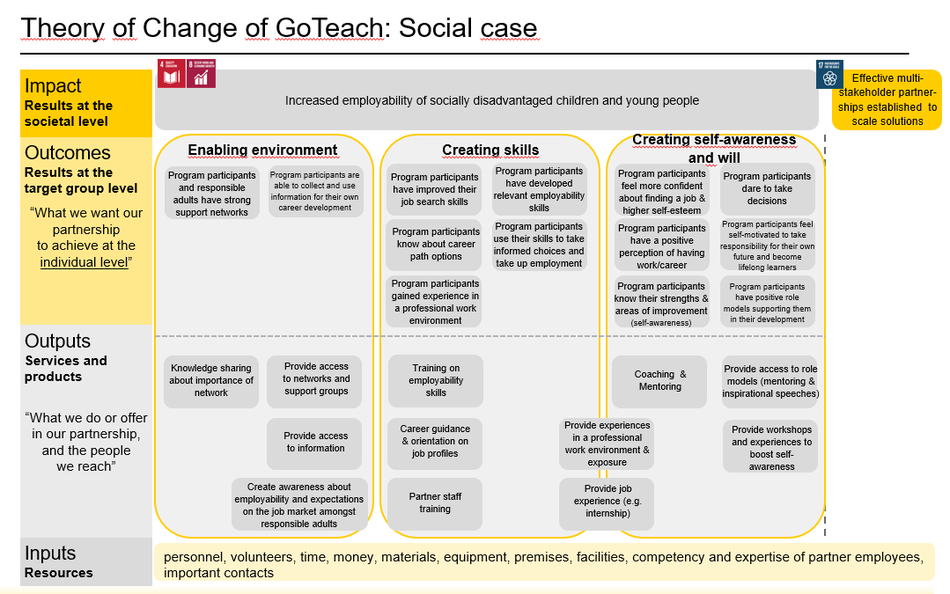No edit summary |
No edit summary |
||
| Line 14: | Line 14: | ||
'''Impact''' are the GoTeach program’s desired changes at the societal level, such as the positive consequences of a lower youth unemployment rate. | '''Impact''' are the GoTeach program’s desired changes at the societal level, such as the positive consequences of a lower youth unemployment rate. | ||
[[File:GoTeachWiki:Theory of | [[File:GoTeachWiki:Theory of change.png|950x950px]] | ||
Revision as of 15:11, 23 June 2020
Our theory of change describes how the GoTeach program aims to bring about social impact. It is a logic model that provides simplified, schematic representations of our program’s operations and describes how GoTeach activities contribute to the overall vision of the program.
We used the iooi method as a tool to demonstrate the impacts of investments in the GoTeach program. iooi stands for ‘input – output – outcome – impact’. Bertelsmann Stiftung developed the method in cooperation with PricewaterhouseCooper and various other companies, including DPDHL.
In order to understand the concept behind a theory of change, it is important to be familiar with the various components:
Inputs are all resources that are necessary in order to be able to implement GoTeach. This primarily includes the full-time personnel and volunteers and their working time, the financial resources, the facilities, and the equipment needed for the implementation of GoTeach,
Outputs are the GoTeach program’s (quantifiable) services and products that are made available to our target group, e.g. training and mentoring sessions performed, and the training curricula and material produced.
Outcomes are the GoTeach results at the target-group level. They illustrate what positive changes the project intends to bring about within the target group.
Impact are the GoTeach program’s desired changes at the societal level, such as the positive consequences of a lower youth unemployment rate.
| Chapter lead | Annette Mock |
|---|
